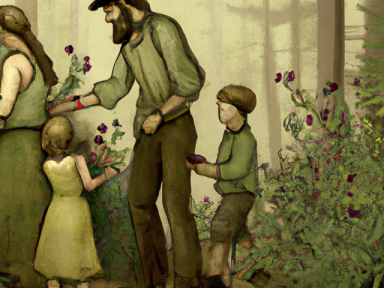During the Great Depression, when resources were scarce and people struggled to put food on their tables, foraging became a vital skill. Foraging involves searching for wild plants and herbs that can be used for sustenance and medicinal purposes. The practice of foraging during the Great Depression is not only fascinating from a historical perspective but also offers valuable insights for modern-day preppers and self-reliant individuals.
The Importance of Foraging During the Great Depression
With unemployment rates soaring and food prices skyrocketing, many families could not afford to buy enough food to feed themselves. As a result, they turned to the land and learned to identify and use the abundant wild plants and herbs in their vicinity. Foraging provided a way to supplement their diets and stay nourished during these challenging times.
Commonly Foraged Plants and Herbs
Let’s take a look at some of the plants and herbs that were commonly foraged during the Great Depression:
Dandelion
Dandelions may be considered a nuisance in modern lawns, but during the Great Depression, they were cherished for their nutritional value. The entire plant is edible, from the roots to the flowers. Dandelion leaves are rich in vitamins A and C, while the roots can be roasted and used as a coffee substitute.
Purslane
Purslane, often deemed a weed, is packed with essential nutrients such as omega-3 fatty acids, vitamins A, C, and E, and minerals like calcium and iron. Its succulent leaves can be used in salads or cooked as a side dish.
Lamb’s Quarters
Lamb’s quarters, also known as wild spinach, was a popular foraged green during the Great Depression. It is abundant and easily recognizable with its diamond-shaped leaves and powdery texture. Lamb’s quarters are rich in vitamins A and C, calcium, and iron. They can be used as a substitute for spinach in various recipes or cooked alone as a nutritious side dish.
Chickweed
Chickweed is an edible plant with tiny white flowers and narrow leaves. It is rich in vitamins A and C, calcium, and iron. Chickweed can be eaten raw in salads or cooked as a pot herb.
Plantain
Plantain is a common weed with wide, ribbed leaves. It has a variety of culinary and medicinal uses. The leaves can be boiled and eaten as a vegetable or used as a poultice for healing wounds and reducing inflammation.
Precautions and Considerations
While foraging for edible plants and herbs can be a valuable skill, it is essential to exercise caution and follow these guidelines:
- Only consume plants and herbs that you can positively identify.
- Be mindful of potential contamination from pesticides or pollutants. Avoid foraging near roadsides or industrial areas.
- Do not over-harvest from a particular area, as it can disrupt the plant’s ecosystem.
- Learn about local regulations and obtain any necessary permits before foraging in protected areas.
By familiarizing yourself with the plants and herbs that people relied on during the Great Depression, you can add valuable knowledge to your self-reliance toolkit. The ability to identify and use wild edibles is not only a means of survival during times of crisis but also a way to connect with nature and foster a sense of independence. Don’t wait for an emergency to strike before learning these valuable skills – start your foraging education today.



GIPHY App Key not set. Please check settings